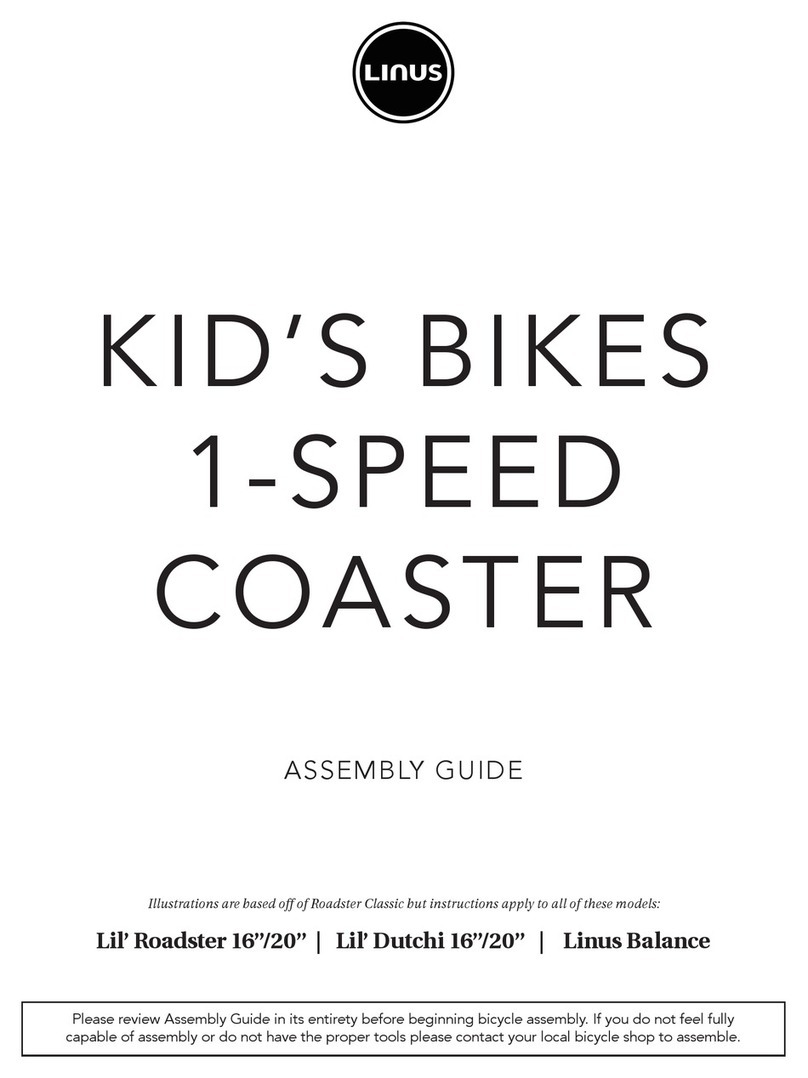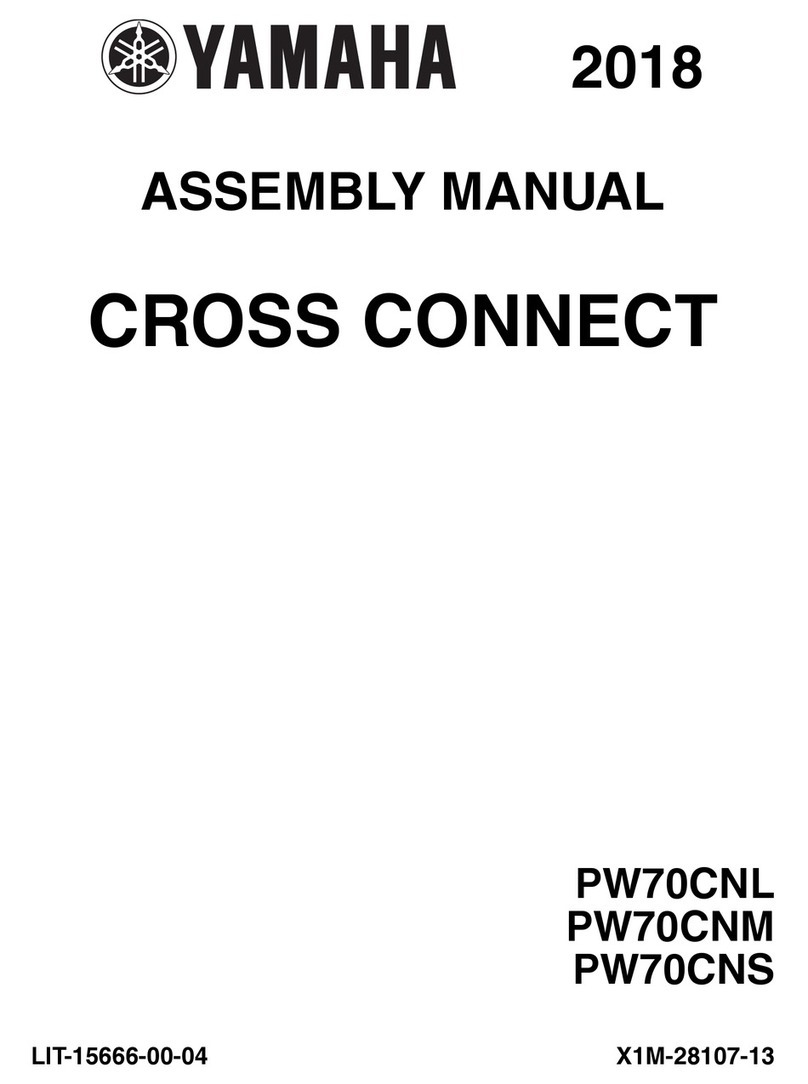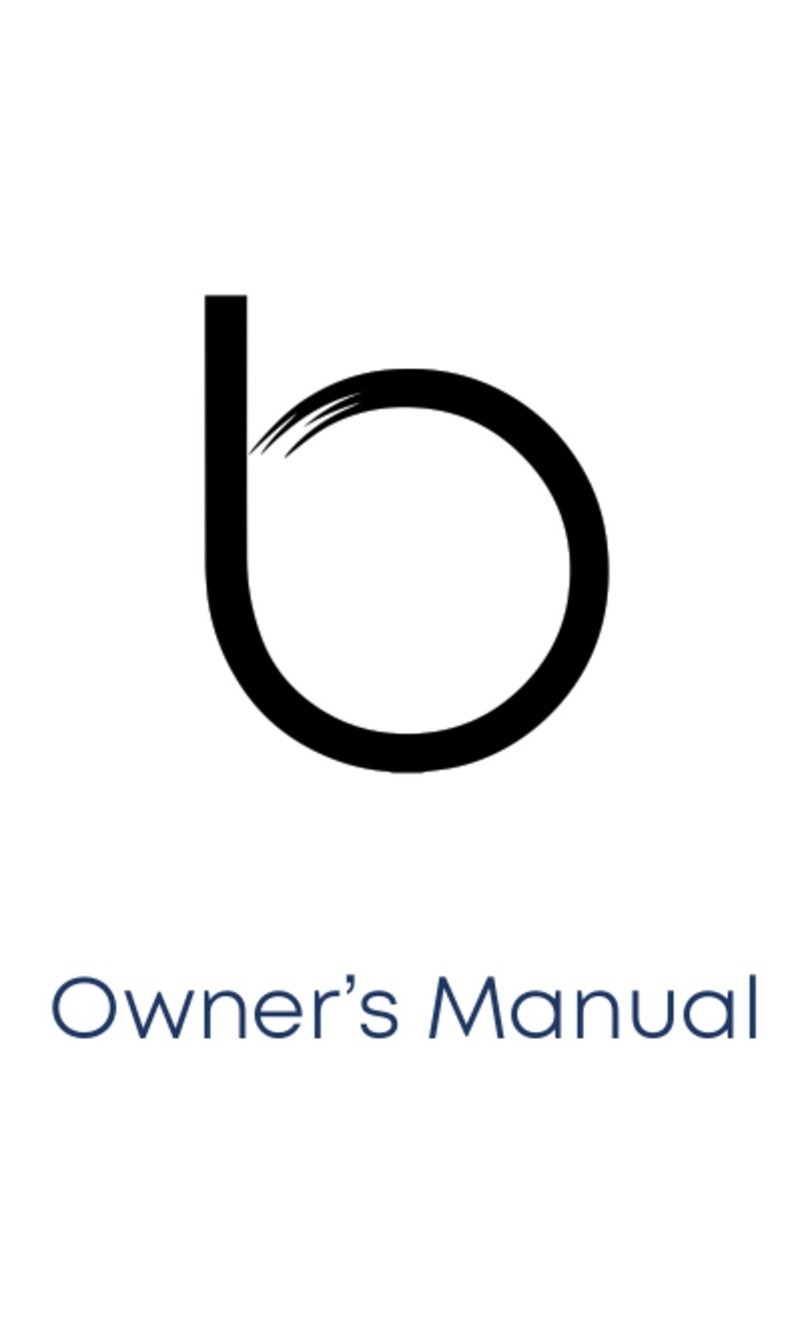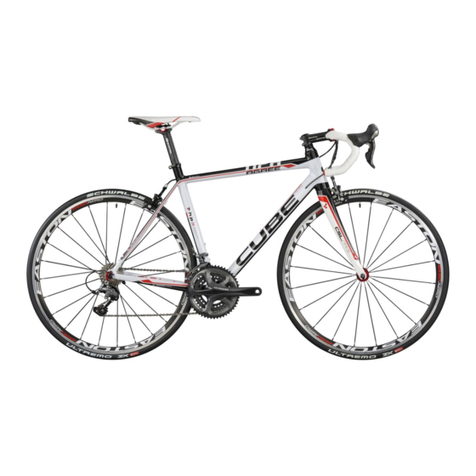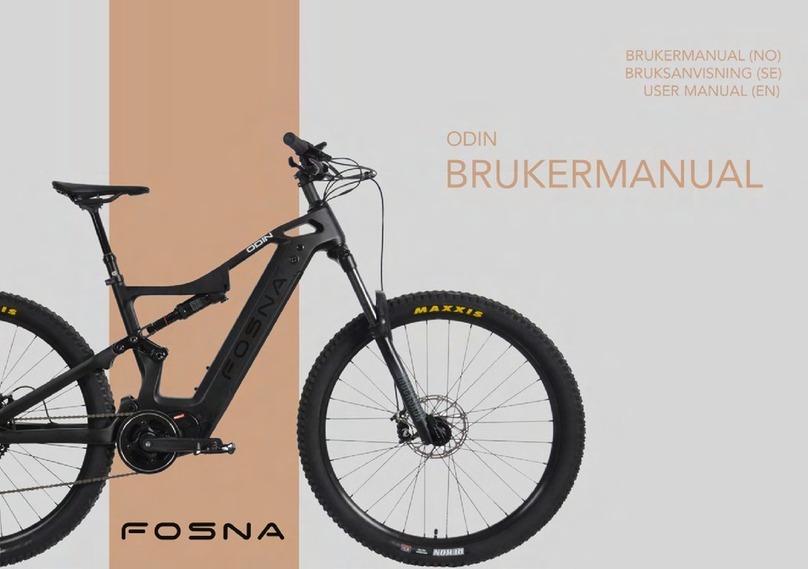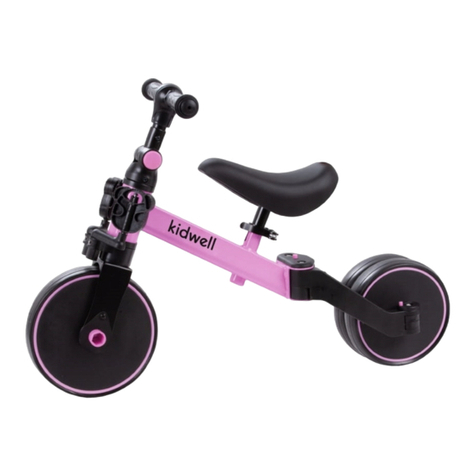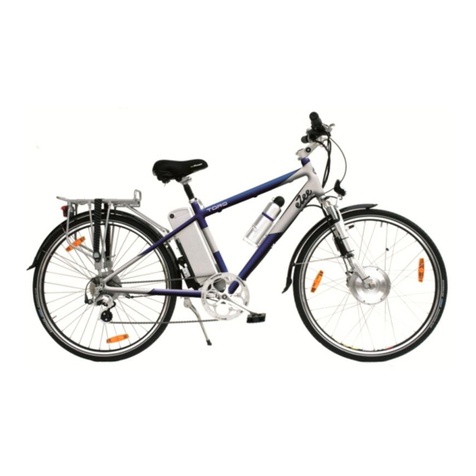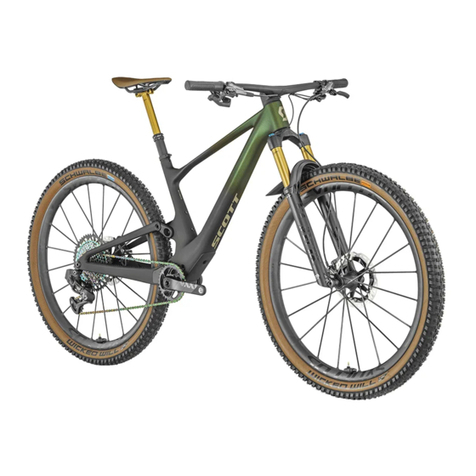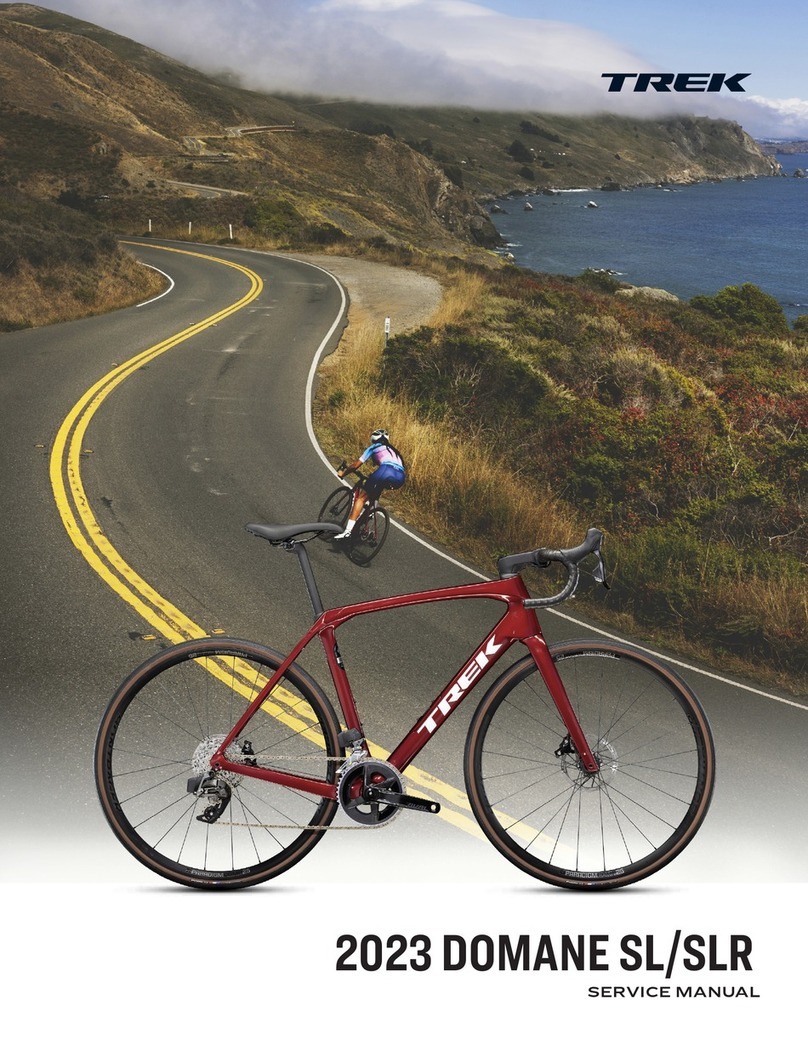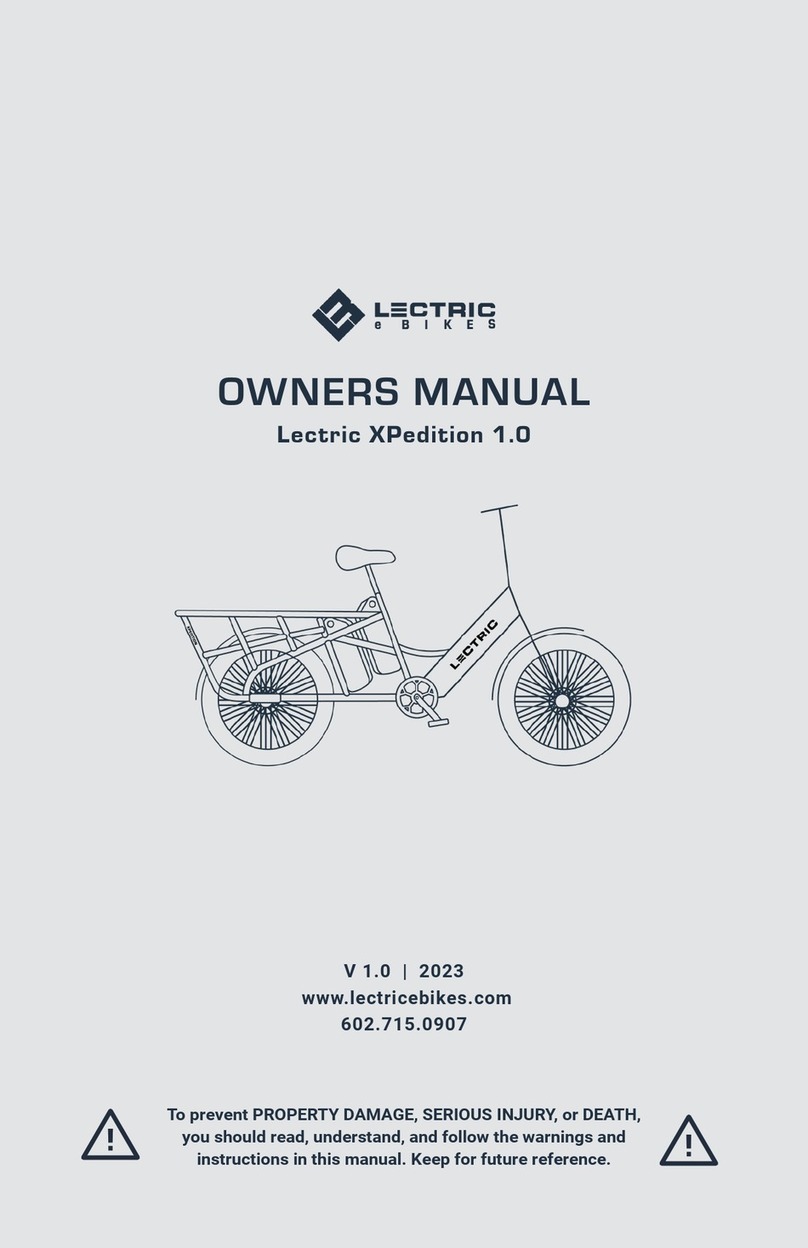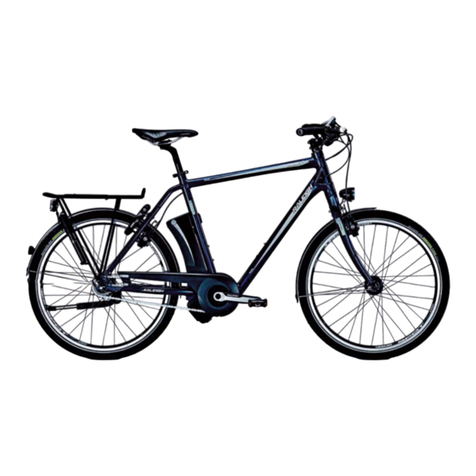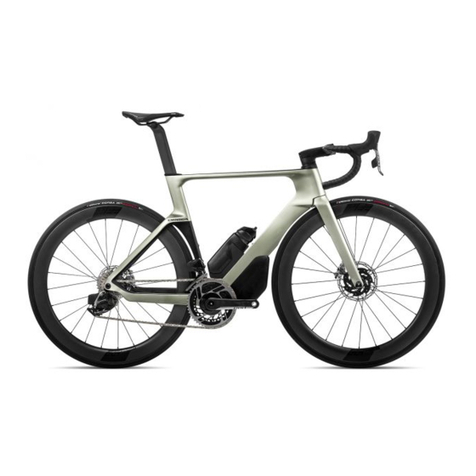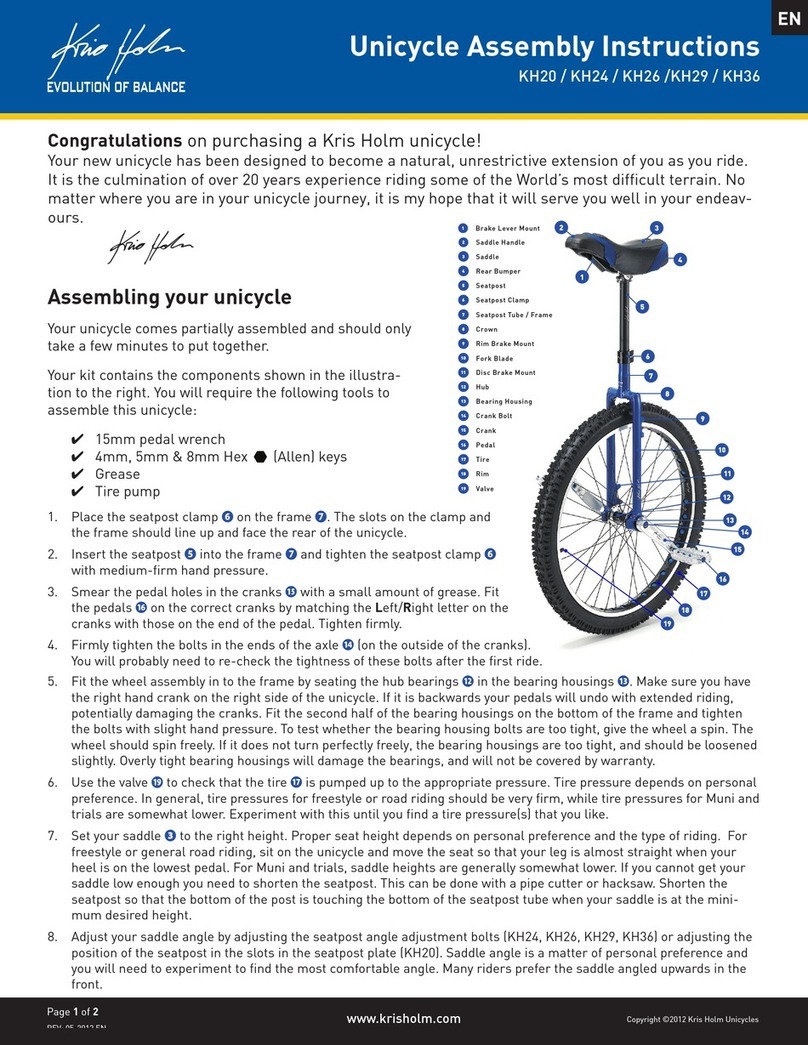Linus Roadster Sport User manual

Roadster Sport | Dutchi 3i | Mixte 3i | Rover 3
Roadster 7i | Dutchi 7i | Mixte 7i | Roadster 8 | Dutchi 8 | Mixte 8
ASSEMBLY GUIDE
INTERNAL
GEAR BIKES
Illustrations are based off of Roadster Sport but instructions apply to all of these models:
Please review Assembly Guide in its entirety before beginning bicycle assembly. If you do not feel fully
capable of assembly or do not have the proper tools please contact your local bicycle shop to assemble.

Required Tools (not included)
Parts (included)
Unpacking
Open top of the bicycle box. Remove
bicycle, saddle and parts box.
We recommend using the flat box as a
work surface for bicycle assembly.
Remove protective packaging carefully.
Do not bend spokes when removing the
front wheel.
SCISSORS PHILIPS HEAD
SCREWDRIVER
15MM WRENCH ALLEN WRENCH
6MM, 5MM, 4MM
ADJUSTABLE
WRENCH
PEDALS
x2
FRONT REFLECTOR
x1
LUBRICATING
GREASE*
2
* Available at auto parts, hardware, or bicycle stores.
** Failure to tighten bolts to the required torque specications can lead to
component failure ultimately leading to serious injury or death.
TORQUE
WRENCH**

C
A
1. Stem Installation
1.1 Apply a small amount of grease around
the bottom 1.5” (35mm) of the stem (A).
Insert stem into the steerer tube so
that the minimum insertion line (B)
is not visible.
1.2 Check cable routing. Make sure that
no cable is pinched or obstructed.
Tighten with the 6mm Allen wrench (C).
Torque Requirement: 20-23Nm.
2. Rear Fender Brace Installation
2.1 Unthread the rear-most bolts from the
rear dropout using a 4mm hex wrench (A).
2.2 Center fender brace at back of
fender (B).
2.1 Thread 4mm bolts through the brace
eyelets and screw them back into the
dropouts (C). Torque Requirement: 4-5Nm.
3. Front Fender Installation
3.1 Unscrew the brake nut from the back
of the fork (A) using a 5mm hex wrench.
Do not misplace the knurled washer.
Keep the knurled washer next to the brake
caliper and slide the brake bolt through
the fender mounting flange (C). Insert the
brake bolt back into the fork and tighten
the brake nut lightly.
Push the fender upward until it stops and
then completely tighten the brake bolt.
Torque Requirement: 6.5-9Nm
3.2 Unthread bolts from the fork
drop outs (D) using a 4mm hex wrench.
Center fender brace. Thread bolts
through the brace eyelets (E) and
screw them back into the dropouts.
Torque Requirement: 4-5Nm.
B
B
A
C
A
C
E
D
3.1
2.1
1.1
2.2
3.2
1.2
B
3

4. Front Wheel Installation
4.1 Use 15mm wrench to loosen the nuts
on the front wheel enough to slide the axle
(A) into the fork dropouts (B). Make sure to
seat the axle completely in the dropouts.
4.2 If the wheel cannot slip past the
brakes flip the brake quick release up.
(some brakes my have a safety release
button on top of the quick release. Press
this down then flip up quick release)
4.1 Tighten the axle nuts. Torque
Requirement: 30-45Nm.
5. Stem Adjustment
5.1 Using a 6mm hex wrench, loosen the
bolt in the front of the stem (A) and adjust
the handlebars so that they are level then
re-tighten. Torque Requirement: 16-22Nm.
5.2 Using a 5mm hex wrench, loosen the
bolt on the bottom of the brake lever.
Adjust the angle levers so that they point
downward (30-45°) and then
re-tighten. Torque Requirement: 6-8Nm.
5.3 Check to make sure the stem is in line
with the front wheel and that the
minimum insertion line (B) is not visible.
Use the 6mm hex wrench to loosen the
stem, adjust and then tighten (C). Torque
Requirement: 20-23Nm.
A
B
A
C
B
4.1
5.1
5.2
5.3
4.2
30-45°
4

6. Front Brake Adjustment
6.1 Using 5mm hex wrench loosen the
cable clamp bolt (A) enough for the cable
(B) to move freely.
Turn the cable adjustment bolt (C)
anti-clockwise 2 full turns.
6.2 Pull back the left-hand brake lever
and insert cable end into the brake lever.
Then pull cable back through the brake
caliper body and slide the cable housing
so that it meets the brake lever. Make
sure that the cable lock on the brake
caliper is in the down position.
6.3 With one hand squeeze the brake
caliper closed so that the brake pads are
in contact with both sides of the rim.
With your other hand, pull the brake
cable taut to remove any slack then
tighten the cable clamp bolt. Torque
Requirement: 6-8Nm.
6.4 Check to see that the brake pads are
parallel and centered on the brake track.
If they are not, loosen the pads with a
4mm hex wrench, center them and
tighten. Torque Requirement: 4-5Nm.
Squeeze the brake lever hard about 10
times to seat the cables, housing, and to
stretch the cable.
Once the cable has seated loosen the
cable clamp bolt, squeeze the brake
caliper together, remove cable slack and
re-tighten. Torque Requirement: 6-8Nm.
Finally, rotate the cable adjustment
bolt clockwise 1-2 turns to fine-tune
how quickly the brakes grab.
(Brake lever should not reach to the
handlebar grips when fully depressed)
6.4
6.2
CORRECT INCORRECT
6.1
A
B
6.3
C
5

7.1
7. Rear Brake Adjustment
7.1 Using a 5mm wrench loosen the
cable clamp bolt (A) enough for the cable
(B) to move freely.
Turn the cable adjustment bolt (C)
anti-clockwise 2 full turns.
7.2 With one hand squeeze the brake cal-
iper closed so that the brake pads are in
contact with both sides of the rim.
With your other hand, pull the brake
cable taut to remove any slack then
tighten the cable clamp bolt. Torque
Requirement: 6-8Nm.
7.3 Check to see that the brake pads are
parallel and centered on the brake track.
If they are not, loosen the pads with a 4
mm wrench, center them and
tighten. Torque Requirement: 4-5Nm.
Squeeze the brake lever hard about 10
times to seat the cables, housing, and to
stretch the cable.
Once the cable has seated loosen the
cable clamp bolt, squeeze the brake
caliper together, remove cable slack and
re-tighten. Torque Requirement: 6-8Nm.
Finally, rotate the cable adjustment
bolt clockwise 1-2 turns to fine-tune
how quickly the brakes grab.
(Brake lever should not reach to the
handlebar grips when fully depressed)
7.3
7.2
A
BC
6
INCORRECT CORRECT

8. Pedal Installation
(POTENTIAL FOR DAMAGE IF
INSTALLED INCORRECTLY!)
8.1 Pedals are side-specific. Check the
ends of the axles to identify which side of
the bicycle to install them in. R = Side of
bicycle with chain.
Apply a small amount of grease to the
pedal threads.
8.2 Install the pedal marked R by turning
the axle CLOCKWISE.
Install the pedal marked L turning the
axle ANTI-CLOCKWISE.
Tighten the pedal axles fully with the
15mm wrench. Torque Requirement:
28-37Nm.
9. Seat Post Installation
9.1 Apply a small amount of grease around
the bottom 1.5” (35mm) of the seat post (A)
and insert the seat post into the seat tube.
Insert seat post so that the minimum
insertion line (B) is not visible and align
the saddle with the bicycle’s top tube.
Tighten down the seat post clamp (C)
using the appropriate hex wrench.
Torque Requirement: 4.5-6Nm.
9.2 Check to make sure that the
saddle is level (D). If it is not, use a 6mm
wrench to loosen the saddle clamp,
adjust the saddle, and re-tighten.
Torque Requirement: 20-27Nm.
10. 3-Speed Hub/Shifter
Adjustment
10.1 Twist the shifter (A) into the middle
position (2nd gear) on the handle bar.
10.2 Look at the shifter box on the chain
side of the rear wheel. A yellow indicator
line should align with two arrows.
10.3 If the hub is out of adjustment
unthread the black lock-nut (B) 1-2
turns with a multi-size wrench.
10.4 To move the indicator line toward
the bicycle, turn the barrel adjuster (C)
anti-clockwise. To move the indicator
away from the bicycle, turn the barrel
adjuster clockwise.
Once the indicator line is between the two
vertical lines, tighten the lock-nut down.
A
BC
10.1 10.2
8.28.1
10.3
9.1
10.4
9.2
B
A
C
A
0°
D
(SIDE-SPECIFIC THREADING ON PEDALS)
7

11. 7-Speed & 8-Speed Hub/Shifter
Adjustment
11.1 (Grip Shift) Twist the grip shifter (A)
into the fourth gear position on the handle
bar.
12.2 (Trigger Shift) Push the trigger shift-
er levers (A) inward to change the gear to
the fourth gear position indicated in the
shifter window on the handlebar.
11.3 Look at the shifter box (A) on the
drive side of the rear wheel. Two yellow
indicator lines (B) should align with each
other when in the fourth gear.
11.4 (Grip Shift) If the hub is out of adjust-
ment turn the cable barrel adjuster (A)
either anti-clockwise or clockwise until
the yellow indicator lines on the shifter
box are aligned.
To move the indicator line toward
the front of the bicycle, turn the barrel
adjuster clockwise. To move the indicator
towards the rear of the bicycle, turn the
barrel adjuster anti-clockwise.
11.2 (Triger Shift) If the hub is out of ad-
justment turn the cable barrel adjuster (B)
either anti-clockwise or clockwise until
the yellow indicator lines on the shifter
box are aligned.
To move the indicator line toward
the front of the bicycle, turn the barrel
adjuster clockwise. To move the indicator
towards the rear of the bicycle, turn the
barrel adjuster anti-clockwise.
11.1
11.3
11.4
A
A
B
A
8
11.2
A
B

12. Rear Rack Installation
12.1 Unthread the 4mm bolts (A) on the
seat stays (above the brake caliper) and
from the rear drop outs (B).
Hold the rack over the rear wheel and
thread the 4mm bolts through the rack
braces into the drop-out but do not
tighten down completely.
Thread the 4mm bolts through the upper
braces and back into the seat-stays but do
not tighten down completely.
Once all 4 bolts are installed hold the
rack centered over the rear wheel and
tighten the bolts completely. Torque
Requirement: 3-5Nm.
13. Reflector Installation
13.1 Using a Philips screwdriver, clamp
the white reflector on the stem or handle-
bar and tighten down. Adjust the reflector
lens so that the lens is perpendicular to
the road.
14. Tire Inflation
Tire information can be found on the
side-walls of your tires – you should be
able to see tire size (e.g. 700x32) and
recommended inflation (e.g. 65-85 PSI).
Tire pressure should be checked
before each ride to help prevent
unnecessary flats.
* Flat tires can occur for a varity of
reasons including imporper inflation
and puncture from road debris. As such,
punctures are not covered by warranty.
A
B
12.1
13.1
9

Stem
Looking down at the handlebars,
ensure that the stem is in line with
the front wheel and the minimum
insertion line is not visible. Once it
is, tighten the 6mm bolt securely.
Torque Requirement: 20-23Nm.
To make sure that the stem is
tightened enough, hold the front wheel
in place and twist the handlebars.
If the handlebars move, re-align the
stem and tighten the bolt to spec.
Handlebar
Looking at the handlebars from the
side, ensure that the handlebars are
level with the ground. Once they
are, tighten the 6mm bolt securely.
Torque Requirement: 16-22Nm
To make sure that the handlebars are
properly tightened, lean down on them
with significant pressure. If they move,
loosen the 6mm bolt, reposition the bar
and re-tighten the bolt to spec.
Final Check
Saddle
Set saddle height slightly below
your hips. Tighten seatpost clamp.
Torque Requirement: 4.5-6Nm.
Make sure saddle clamp is tightened.
Torque Requirement: 20-27Nm.
Wheels
Check front and rear axle nuts for
tightness. Torque Requirement:
30-45Nm.
General
Test ride your Linus to ensure that
the hub is shifting correctly, that
the brakes are engaging quickly
and securely, and the fenders and
chain guard do not rub or make
unnecessary noise.
10
This manual suits for next models
11
Table of contents
Other Linus Bicycle manuals
